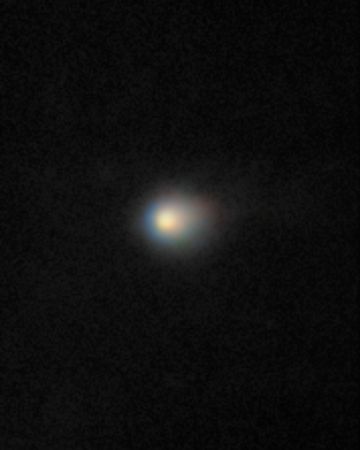Using the Gemini North telescope in Hawaii, astronomers have captured an image of comet 3I/ATLAS, an interstellar object that was first detected on July 1, 2025, by the Asteroid Terrestrial-impact Last Alert System (ATLAS) for which the comet was named. The letter "I" means "interstellar," and "3" indicates it is only the third object from another star system ever observed. The observations will help scientists study the characteristics of this rare object's origin, orbit and composition.
Gemini North is in Hawaii and is one half of the International Gemini Observatory, funded in part by the U.S. National Science Foundation. The imagery reveals the comet's compact coma - a cloud of gas and dust surrounding its icy nucleus.
"The sensitivity and scheduling agility of the International Gemini Observatory has provided critical early characterization of this interstellar wanderer," says Martin Still, NSF program director for the International Gemini Observatory. "We look forward to a bounty of new data and insights as this object warms itself on sunlight before continuing its cold, dark journey between the stars."

Ranging from tens of meters to a few kilometers in size, interstellar objects are pieces of cosmic debris left over from the formation of their host star's planetary systems. As these remnants orbit their star, the gravity of nearby larger planets and passing nearby stars can launch them out of their home systems and into interstellar space, where they can cross paths with other solar systems, including ours.
These visitors from faraway regions of the cosmos are valuable objects to study since they offer a tangible connection to other star systems. They carry information about the chemical elements that were present when and where they formed, which gives scientists insight into how planetary systems form at distant stars throughout our galaxy's history, including stars that have since died out.
Although 3I/ATLAS is only the third interstellar object ever discovered, the NSF-DOE Vera C. Rubin Observatory, jointly funded by NSF and the U.S. Department of Energy's Office of Science, is expected to capture millions of objects moving throughout our solar system when it begins operations later this year. By repeatedly scanning the entire southern hemisphere sky every few nights, NSF-DOE Rubin will capture an unpredictable number of never-before-seen interstellar objects.






